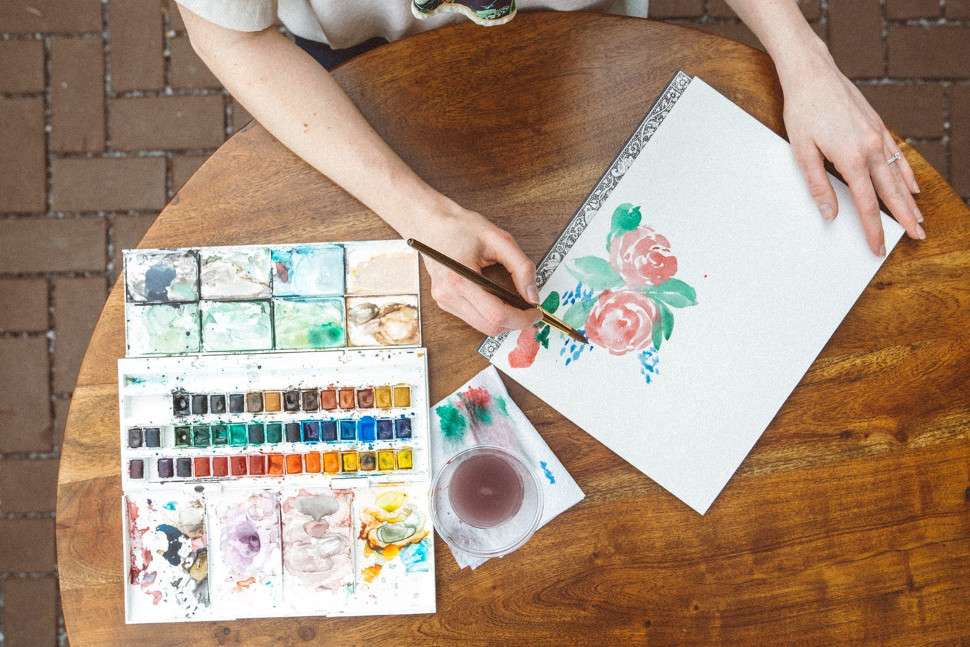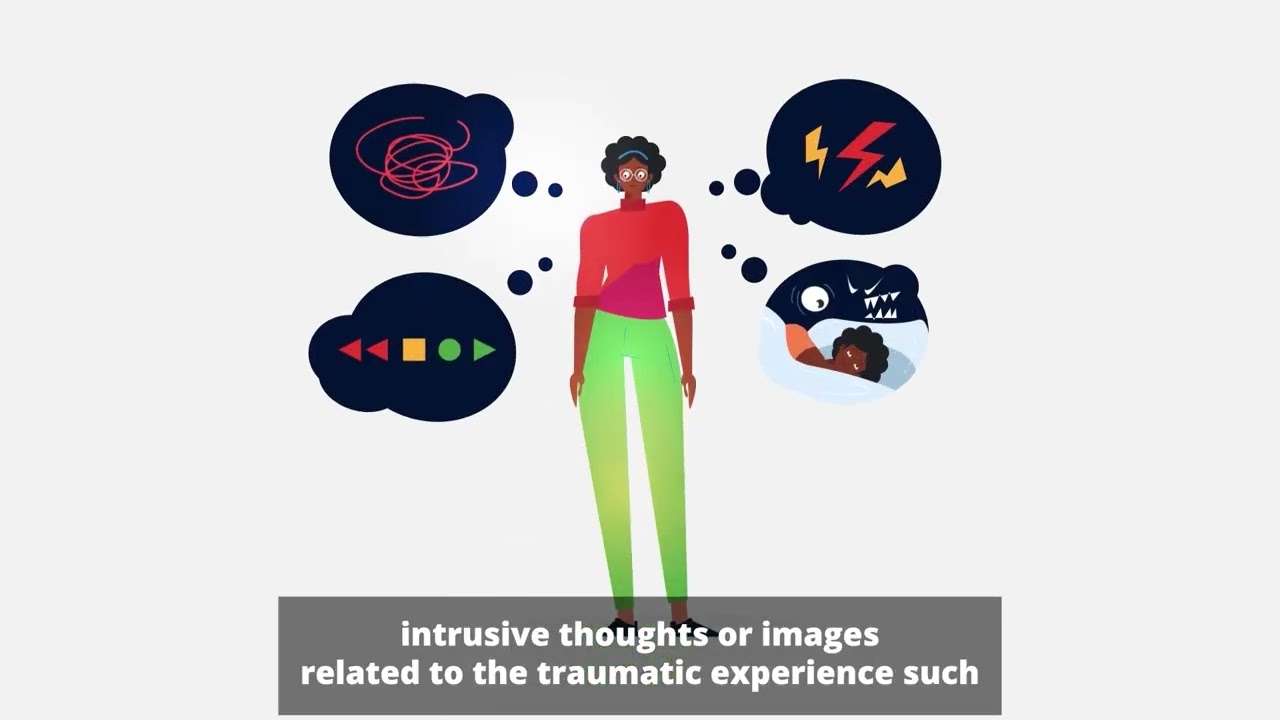If you were to ask someone, “What’s causing your insomnia?” they might say something like, “Oh, my stress, my anxiety, my brain won’t shut off.” Maybe they think it’s their cat waking them up or they drank too much coffee or watched a scary movie before bed.
And granted, all of these things can mess with your sleep for a night or two or more, but they aren’t the thing that causes chronic insomnia.
In most cases, chronic insomnia is caused by one bad habit where you accidentally trained your brain not to sleep. The bad habit is staying in bed awake. This is the worst thing you can do for your insomnia, and it’s key to one of the most effective treatments for insomnia, CBT-I, an evidence-based treatment for insomnia that has shown up to 80% effectiveness at relieving insomnia.
You see, when you lie in bed awake — maybe you went to bed too early or you’re trying to force yourself to sleep — and you’re worrying about all the things, like what you said that day and what’s going to happen with your job and whether that one guy likes you or any of any number of other things, you’re basically training your brain that the bed is the place for worrying and lying there awake.
This is a paired association. It’s like Pavlov’s dogs — they learned to salivate when the bell rang, even when there wasn’t any food around.
When you lay in bed awake, your brain learns that the bed is the place for worrying, for thinking, for watching shows, for doing homework, whatever it is that you’re doing. You lay down in bed, and your brain thinks, “Oh, I know this place. This is the thinking place.” So without realizing it you trigger that worry reaction, and then it takes hours to fall asleep.
Imagine a feeling of calm….. of peace….. a place where you have no worries, cares, or concerns…. a place where you can simply rejuvenate, relax, and enjoy just being.
Now I want you to imagine your peaceful place. It can be a beach or a forest or a city — any place where you feel calm, safe, peaceful. Maybe it’s a memory, maybe it’s a place in your imagination. You may be alone or with someone who keeps you safe.
Visualize it. What do you see? What are the colors and shapes? (Pause for 10 or so)
Now step into your scene. What do you feel with your body? (Pause for 10)
Can you feel the wind? Can you feel the temperature? (Pause for 10)
Do you feel warm or cold? What can you feel under your feet? Can you feel mud squishing between your toes? Are you floating in air or are you laying down? Do you feel a soft breeze, the warm sun or the touch of Mum’s hand stroking your head? Do you feel safe and happy?
What textures can you feel? Allow yourself to be in this peaceful place. (Pause for 10)
What can you hear while in your peaceful place? Is it perfectly silent? Is there the gentle sound of wind or water or music?
What can you smell? What is the crisp or delicious smell around you?
Stay here as long as you like. Look around. Notice what it feels like to feel calm and happy.
Take a last look around. Remember how it feels to be in your happy place. Know that you can come back to this time and place anytime you wish, you just have to remember what it looks and feels like here. Remember what it smells like, what you can hear and what you can taste.
And when you are ready, let yourself drift away to sleep.
Check out my free Grounding Skills Course below for more skills to calm your body and mind.
Learn more about grief in this mini-course: https://courses.therapyinanutshell.com/grief/?utm_medium=YTDescription&utm_source=Podcast
“Grief is unpredictable, and it will go wherever it finds an outlet. If it can’t be expressed emotionally, it may find expression in the body.” (136)
Grief, like all emotions, isn’t just in your head; it shows up in your body in remarkable ways. But most people have never been taught what is common in the grieving process and how grief does show up in your body, and this can leave some people feeling stuck, spiraling through endless grief and pain. Grief has many physical symptoms. When you learn the physical symptoms of grief, you can be more equipped to address it and work through the process of grief and loss. In this video we’ll learn from grief expert Dr. Dorothy Holinger the author of The Anatomy of Grief, how grief shows up in the body and what we can do to work through it. Grief does not have a concrete number of stages of grief. But, when you learn about the physical symptoms you can gain more awareness of your body and be more accepting of those symptoms of grief and loss. I recently recorded an interview with Dorothy about how grief impacts the body, but unfortunately some of the video files got corrupted, so I’m summarizing our conversation here. The full length interview is on my podcast. https://tinpodcast.podbean.com/e/how-grief-shows-up-in-the-body/ I’m not going to pretend that grief is some easy thing that can or should be fixed, but there are some things you can do that can help your heart and body work through the suffering.
00:00 Introduction 01:03 All Courses 40% off 02:02 How grief impacts the brain 02:46 How grief affects the heart 03:56 Grief tears 04:48 decreased pleasure after a loss 05:01 Loss of appetite after a loss and difficulty sleepin 05:25 weakened immune system while grieving 05:40 headaches and body aches during grieving 05:56 other somatic changes with grief 07:05 When you’re not allowed to mourn 07:44 How to deal with grief
Looking for affordable online counseling? My sponsor, BetterHelp, connects you to a licensed professional from the comfort of your own home. Try it now for 10% off your first month: https://betterhelp.com/therapyinanutshell Learn more in one of my in-depth mental health courses: https://courses.therapyinanutshell.com/?utm_medium=YTDescription&utm_source=Podcast
Support my mission on Patreon: https://www.patreon.com/therapyinanutshell
Sign up for my newsletter: https://www.therapyinanutshell.com?utm_medium=YTDescription&utm_source=Podcast
Check out my favorite self-help books: https://kit.co/TherapyinaNutshell/best-self-help-books
Therapy in a Nutshell and the information provided by Emma McAdam are solely intended for informational and entertainment purposes and are not a substitute for advice, diagnosis, or treatment regarding medical or mental health conditions. Although Emma McAdam is a licensed marriage and family therapist, the views expressed on this site or any related content should not be taken for medical or psychiatric advice. Always consult your physician before making any decisions related to your physical or mental health. In therapy I use a combination of Acceptance and Commitment Therapy, Systems Theory, positive psychology, and a bio-psycho-social approach to treating mental illness and other challenges we all face in life. The ideas from my videos are frequently adapted from multiple sources. Many of them come from Acceptance and Commitment Therapy, especially the work of Steven Hayes, Jason Luoma, and Russ Harris. The sections on stress and the mind-body connection derive from the work of Stephen Porges (the Polyvagal theory), Peter Levine (Somatic Experiencing) Francine Shapiro (EMDR), and Bessel Van Der Kolk. I also rely heavily on the work of the Arbinger institute for my overall understanding of our ability to choose our life’s direction.
And deeper than all of that, the Gospel of Jesus Christ ori
“I would just like to thank you for your amazing content and online courses. Thanks to your help I am no longer homebound by crippling panic and anxiety. I went out today into a busy town and was happy, I feel safe and liberated. I have shared all my progress with my doctor and she is ecstatic about my progress and will be recommending your courses to other patients struggling with mental health. I am medication free and happy for the first time in my life. The changes are long lasting and I now can get myself out of a low without going further down the rabbit hole.”
Looking for affordable online counseling? My sponsor, BetterHelp, connects you to a licensed professional from the comfort of your own home. Try it now for 10% off your first month: https://betterhelp.com/therapyinanutshell
Check out Amber’s channel here: https://www.youtube.com/channel/UCT8PE1v0xFR9zLXOijxM6hg
Alcohol use changes your brain chemistry in a way that makes you more anxious. It also changes how you think- which can make you more anxious. And when you’re drunk, you might do stuff that makes you more anxious later…whether you or a family member has a problem with alcohol use, it’s important to know how it affects the brain and the practical steps you can take to escape the cycle. But, I am not a substance abuse counselor, it’s out of my wheelhouse so I was super grateful when Amber Hollingsworth offered to make a video for my channel all about how alcohol use has the surprising side effect of making your brain more anxious. Amber is a Licensed Professional Counselor (LPC), Master Addiction Counselor (MAC), she’s super freaking passionate about helping individuals and families overcome addiction and has worked in every level of care since 2004. So I hope you love what she has to say… Here’s Amber.
Looking for affordable online counseling? My sponsor, BetterHelp, connects you to a licensed professional from the comfort of your own home. Try it now for 10% off your first month: https://betterhelp.com/therapyinanuts…
Learn more in one of my in-depth mental health courses: https://courses.therapyinanutshell.co…
Support my mission on Patreon: https://www.patreon.com/therapyinanut…
Sign up for my newsletter: https://www.therapyinanutshell.com?utm_medium=YTDescription&utm_source=YouTube
Check out my favorite self-help books: https://kit.co/TherapyinaNutshell/bes…
Therapy in a Nutshell and the information provided by Emma McAdam are solely intended for informational and entertainment purposes and are not a substitute for advice, diagnosis, or treatment regarding medical or mental health conditions. Although Emma McAdam is a licensed marriage and family therapist, the views expressed on this site or any related content should not be taken for medical or psychiatric advice. Always consult your physician before making any decisions related to your physical or mental health. In therapy I use a combination of Acceptance and Commitment Therapy, Systems Theory, positive psychology, and a bio-psycho-social approach to treating mental illness and other challenges we all face in life. The ideas from my videos are frequently adapted from multiple sources. Many of them come from Acceptance and Commitment Therapy, especially the work of Steven Hayes, Jason Luoma, and Russ Harris. The sections on stress and the mind-body connection derive from the work of Stephen Porges (the Polyvagal theory), Peter Levine (Somatic Experiencing) Francine Shapiro (EMDR), and Bessel Van Der Kolk. I also rely heavily on the work of the Arbinger institute for my overall understanding of our ability to choose our life’s direction.
And deeper than all of that, the Gospel of Jesus Christ orients my personal worldview and sense of security, peace, hope, and love https://www.churchofjesuschrist.org/c…
If you are in crisis, please contact the National Suicide Prevention Hotline at https://suicidepreventionlifeline.org/ or 1-800-273-TALK (8255) or your local emergency services.
Copyright Therapy in a Nutshell, LLC




